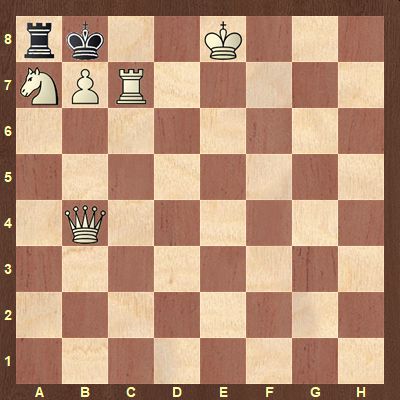.jpeg)

.jpeg)

This is a clever little position. A minute or two will probably convince you that there is no plausible solution. The best way to find the required mate in one is to think – laterally!
So many temptations! The badly exposed black king has a single flight square (e7), and White has all his its pieces pointed at the enemy king. In addition there are three white pawns that can promote to additional queens, rooks, bishops or knights.
Your task it is to find the forced mate in two. You can do this by executing trial white moves. The diagram will defend for Black. Use your cursor keys to move back and try something else. The notation button below the board will display all the attempts you have made so far.
You will only be able to mate in two if you play one specific first move. All other moves will allow Black to defend. Another fun task: find out why all the other promising moves do not work. The diagram will help you figure everything out.
Now that you have been fooling around with potential pawn promotions, here is a problem where Black has four pawns ready to promote and join the fray.
It looks like Black has overwhelming forces – potentially multiple queens to help him hold the position – and in fact win. How can White overcome the defensive potential of the opponent to prevail? Here again it is your task to move the white pieces and overcome the resistance the diagram will come up with. Warning: it is not a short process.
Full video solutions will be given in a few days.
| Advertising |